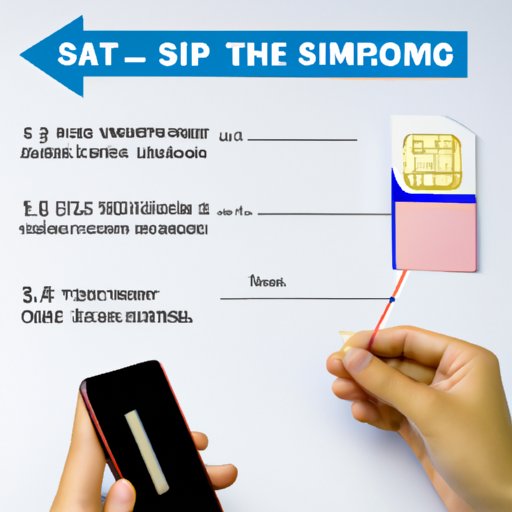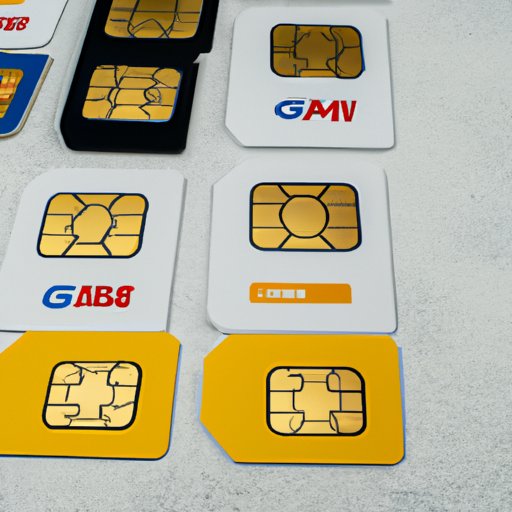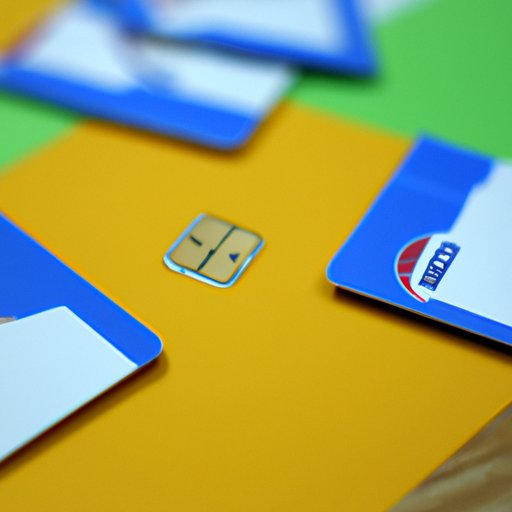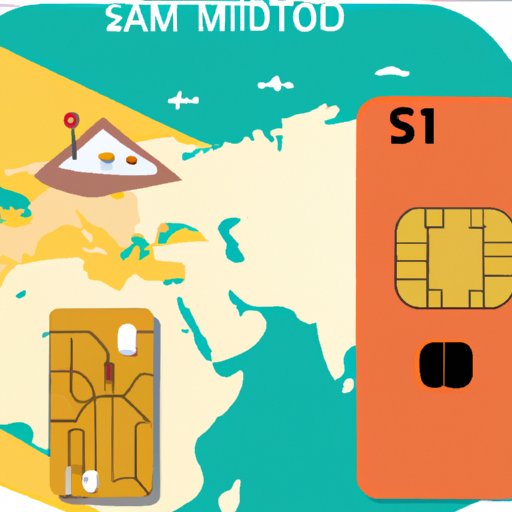Introduction
Traveling abroad can be an exciting experience, but it also comes with a few challenges. One of the most important things to consider is staying connected while you’re away from home. An international sim card can help you stay connected, no matter where you are in the world. In this article, we will explore how to use a sim card for international travel, covering the basics, steps for setting up, comparison of different types, tips for using effectively, and troubleshooting common issues.
Explaining the Basics of International Sim Cards
Before you begin using an international sim card, it’s important to understand what it is and how it works. An international sim card is essentially a prepaid or post-paid mobile service that allows you to make calls, send messages, and access the internet while traveling abroad. It is usually much more affordable than using your home country’s service provider, as there are no roaming charges involved.
There are two main types of international sim cards: pre-paid and post-paid. Pre-paid sim cards allow you to purchase a certain amount of data upfront and use it as needed. Post-paid sim cards require you to sign up for a monthly plan and pay a fee each month. Both types of sim cards offer a variety of data plans and coverage areas, so it’s important to do your research and compare different options before making a decision.

Steps to Setting Up an International Sim Card
Once you’ve chosen the right international sim card for your needs, it’s time to set it up. Here are the steps you need to take to get started:
Preparing Your Phone
Before you can use your new sim card, you need to make sure your phone is compatible. Most phones are, but if yours isn’t, you may need to purchase a new phone or a special adapter. Once you’ve verified that your phone is compatible, you can move on to the next step.
Activating Your Sim Card
The next step is activating your sim card. This process varies depending on the type of sim card you have. For pre-paid sim cards, you typically just need to insert the sim card into your phone and enter the activation code. For post-paid sim cards, you will need to provide additional information such as your name, address, and credit card details.
Configuring Your Settings
Once your sim card is activated, you’ll need to configure your settings. This includes selecting a data plan, configuring your voicemail, and setting up any additional features. The process for doing this will vary depending on the type of sim card you have, so make sure to follow the instructions provided by your service provider.

Comparing Different Types of International Sim Cards
Now that you understand the basics of international sim cards, let’s take a look at some of the differences between the various types. Here are a few key points to consider when comparing different plans:
Pre-Paid vs. Post-Paid
The first thing to consider is whether you want a pre-paid or post-paid sim card. Pre-paid sim cards are great for short-term trips, as you only need to purchase the amount of data you need upfront. Post-paid sim cards are better for long-term trips, as you can sign up for a monthly plan and pay a fixed fee each month.
Data Plans
Another important factor to consider is the data plans available. Different service providers offer different data plans, so it’s important to compare them and choose the one that best suits your needs. Some plans offer unlimited data, while others have limits based on usage or time.
Coverage Areas
Finally, you should consider the coverage areas offered by different service providers. Different service providers offer different levels of coverage, so it’s important to do your research and make sure that your chosen provider has good coverage in the countries you’ll be visiting.
Tips for Using an International Sim Card Effectively
Once you’ve chosen an international sim card and set it up, there are a few tips to help you get the most out of it. Here are a few suggestions:
Setting Up Roaming
If you’re going to be traveling to multiple countries, it’s a good idea to set up roaming on your sim card. This will allow you to switch between networks without having to change sim cards, which can save you time and money.
Utilizing Wi-Fi Hotspots
To save on data costs, you should try to use Wi-Fi hotspots whenever possible. Many hotels, cafes, and airports offer free Wi-Fi, so take advantage of these when you can.
Conserving Battery
When you’re traveling, it’s important to conserve your battery as much as possible. Make sure to turn off any unnecessary features, such as Bluetooth or GPS, when not in use. You should also invest in a portable charger or power bank to ensure that you always have enough juice.

Troubleshooting Common Issues with International Sim Cards
Despite all your preparation, there may still be times when you encounter problems with your international sim card. Here are a few common issues and how to troubleshoot them:
Difficulty Connecting to Network
If you’re having difficulty connecting to the network, it could be due to poor signal strength in your area. Try switching to another network or moving to a different location to see if that helps.
Unstable Connection
If your connection is unstable, it could be due to a weak signal or interference from other devices. Try turning off any nearby devices and moving to a place with stronger signal strength.
Poor Reception
If your reception is poor, it could be due to a number of factors. Try switching to a different network or changing the location of your device to see if that improves reception.
Conclusion
Using an international sim card for travel can be a great way to stay connected while you’re away from home. By understanding the basics of international sim cards, setting up your phone, comparing different types, utilizing tips for using effectively, and troubleshooting common issues, you can ensure that you get the most out of your international sim card.
Summary of Key Points
An international sim card is a prepaid or post-paid mobile service that allows you to make calls, send messages, and access the internet while traveling abroad. There are two main types of international sim cards: pre-paid and post-paid. Before you can use your new sim card, you need to make sure your phone is compatible and activate your sim card. Different service providers offer different data plans and coverage areas, so it’s important to compare them and choose the one that best suits your needs. Additionally, there are a few tips to help you get the most out of your international sim card, such as setting up roaming, utilizing Wi-Fi hotspots, and conserving battery.
Final Thoughts
Using an international sim card for travel can give you peace of mind, knowing that you’ll stay connected wherever you go. With this guide, you now have the knowledge and resources to make the most of your international sim card.
(Note: Is this article not meeting your expectations? Do you have knowledge or insights to share? Unlock new opportunities and expand your reach by joining our authors team. Click Registration to join us and share your expertise with our readers.)
